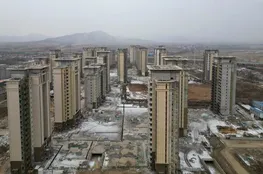As Donald Trump prepares to step into the presidential office, he seems to be inheriting a generally stable economy. The stock market is soaring at record levels, unemployment rates are notably low, and the GDP has been growing steadily at around 2.5% in recent analysis. However, beneath this surface-level prosperity, there lie several underlying economic challenges which could impact Trump's strategies on trade and fiscal policies. Leading into 2026, the labor market dynamics have shifted since Trump's previous tenure. Whereas in 2017 he benefited from decreasing unemployment rates and consistent payroll growth of about 200,000 jobs monthly, the current scenario is less favorable.
Unemployment is ticking upwards, payroll additions have slowed significantly, particularly in private sectors, hitting a low unseen since 2010, excluding pandemic disruptions. This slowdown presents a formidable task for Trump's administration: revitalizing the labor market to maintain economic growth and safeguard upcoming electoral victories. Another critical factor is government employment, which has been a linchpin in job creation, with government jobs comprising a significant portion of the job growth since late 2022. This rapid growth rate, unseen since the 1960s, is threatened by potential cuts in government spending under Trump's proposed cost-efficiency measures.
Concurrently, previous gains from cleantech and manufacturing investments—spurred by substantial government support through grants and subsidies—are at risk as these spending-friendly policies face potential rollback. The economic contribution of construction and manufacturing, bolstered by policies like the Infrastructure Investment and Jobs Act, and the Inflation Reduction Act, might be jeopardized. The prospect of tapering these investments injects uncertainty around the continuity of projects like Hyundai's development in Georgia or Taiwan Semiconductor's operations in Arizona. Such unpredictability poses significant risks to the economic expansion that these projects once promised.
Adding layers of complexity as Trump approaches the 2026 midterms with these economic factors in play. Turning to the housing market, Trump's fiscal ideas, partly reflected through proposed tariffs and spending policies, cast shadows on an already fraught sector. Rising mortgage rates, which surged post-election, are stressing the housing market. Should Trump's tax policies or tariffs trigger further inflationary pressures, the heightened borrowing costs could deter home purchases and pause new housing developments. Trump's approach to tariffs and immigration, though possibly aligned with voter sentiments, also presents potential pitfalls.
By potentially exacerbating economic tensions as borrowing costs rise and some economic sectors decelerate. While the unpredictability of Trump's promises leaves room for varying economic outcomes, managing this multifaceted economic landscape may prove arduous. It becomes critical for the new administration to balance policy promises with practical economic realities, ensuring Trump navigates these tricky waters effectively. As we watch these developments unfold, the broader implications of both Biden's lingering initiatives and Trump's proposed economic strategies will need careful consideration for ongoing stability.
























